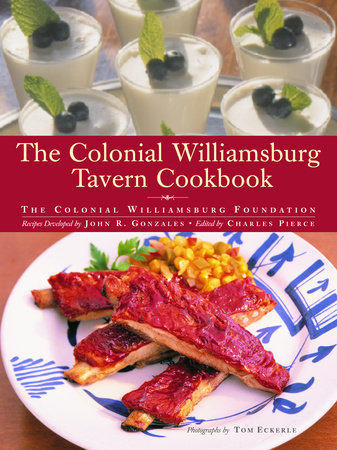Chowning’s Tavern Brunswick Stew
SERVES 8-10
The argument will never be settled as to whether this tasty dish cane from Brunswick County, Virginia; Brunswick, Georgia; or Brunswick County, North Carolina, although Virginia's claim is the best documented The recipe is now made with stewed chicken, corn, lima beans, and tomatoes and omits the squirrel, which was originally used
2 chickens (about 3 pounds each), cut into 6 or 8 pieces
4-5 large tomatoes, peeled, seeded, and chopped, or 2 (19-ounce) cans, drained, seeded, and chopped
4 cups fresh or frozen corn kernels
3 medium all purpose potatoes, peeled and cut into 1/2 inch dice
2 large onions, thinly sliced
2 caps fresh or frozen lima beans
2 cups fresh or frozen sliced okra
1 tablespoon salt, or to taste
1 tablespoon freshly ground black pepper, or to taste
1 teaspoon sugar, or to taste
In a large pot, place the chickens and add enough water to cover, 2-3 quarts. Bring to a boil over high heat. Reduce the heat to medium low and simmer, partially covered, until the chicken is falling off the bones and the broth is well flavored, 2-3 hours. Use
a slotted spoon to transfer the chicken to a bowl and cool.
Skim the broth. Add the tomatoes, corn, potatoes, onions, lima beans, and okra. Season with the salt, pepper, and sugar. Bring to a simmer over medium heat. Reduce the heat to medium low and cook, stirring often, until the potatoes are tender, about 20 minutes.
Meanwhile, pull the chicken off the bones. Add the chicken to the vegetables and taste the stew for seasoning. Add more salt, pepper, or sugar as desired, Serve hot in warmed bowls.
"Southern Cooks prize okra for its distinctive flavor and texture. The vegetable cam to the New World from Africa via the slave trade."
Copyright © 2001 by Recipes developed by John Gonzales, edited by Charles Pierce. All rights reserved. No part of this excerpt may be reproduced or reprinted without permission in writing from the publisher.









